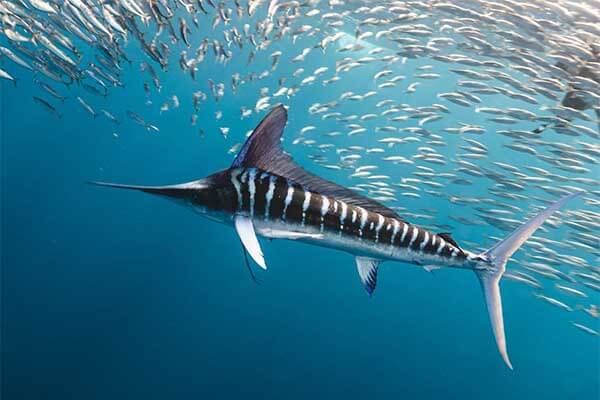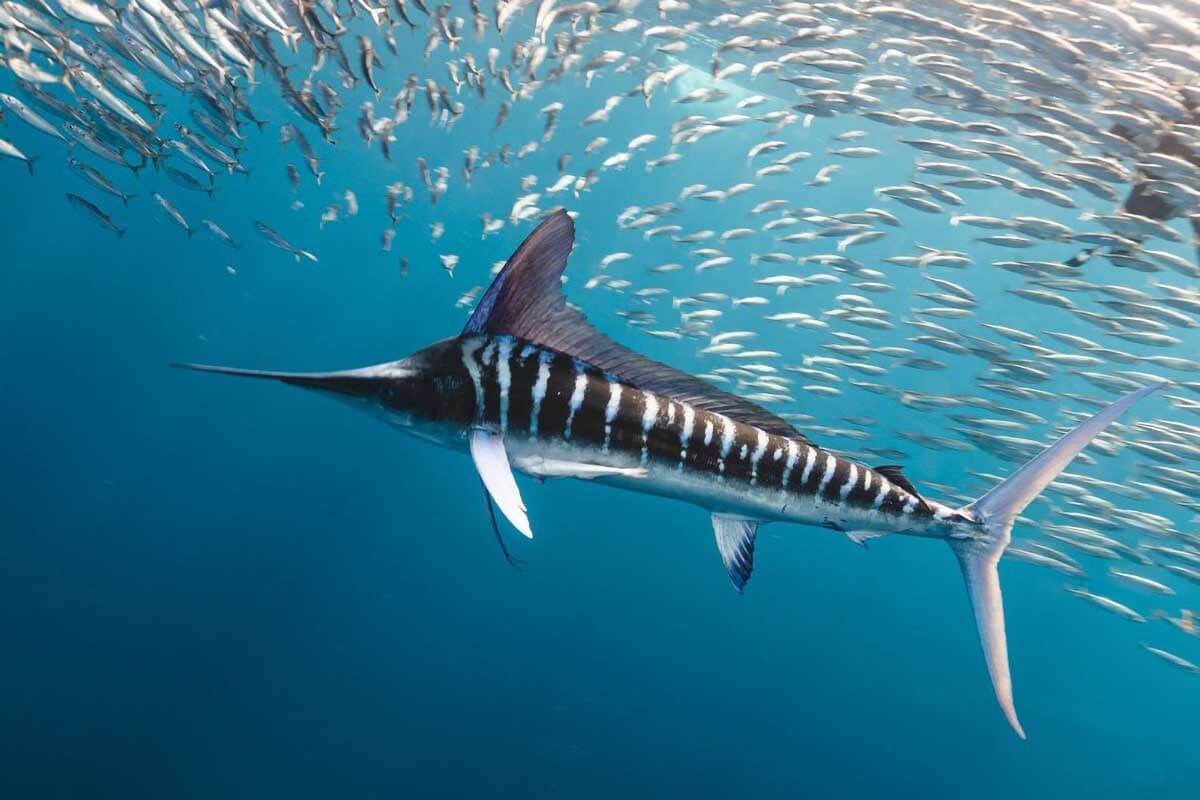MMF study of black and striped marlin diving behaviour


By
A new study by the Marine Megafauna Foundation (MMF) investigating the diving behaviour of black and striped marlin has found that variations in their habitual depth ranges allows both species to be successful, even when sharing the same habitat.
Published in the journal Marine Ecology Progress Series, the study is the first of its kind to investigate the diving behaviour of marlin species in the Indian Ocean.
The researchers, together with local sport fishing guides collaborating with the project, deployed satellite tags of marlin off the coast of Kenya to track their movements. It was found that both black marlin (Istiompax indica) and striped marlin (Kajikia audax) dived to depths greater than 460m in temperatures as low as 10°C, but both species spent most of their time in warmer, shallower waters.
Overall, however, it was found that striped marlin descended to deeper waters more frequently than black marlin, but also spent more time in the top 5m of the water column. The difference in behaviour is caused by a variation in diet between the two species.
‘Striped marlin often hunt squid in deep water,’ explained Dr Chris Rohner, lead author of the study and a Principal Scientist with MMF. ‘After a deep dive into cold water, they have to warm up at the surface before they resume hunting. In contrast, black marlin largely stayed closer to the surface, in the warmer mixed layer, where they were likely hunting fish.’

Roy Bealey, billfish expert and a co-author of the study, added, ‘we often see striped marlin, but rarely black marlin, basking at the surface, showing no interest in fishing lures. Our new data suggest that these striped marlin are probably recovering from deep dives, rather than searching for prey in surface waters.’
Further differences were discovered between the diving patterns of the two species at different times during the day. By and large, tagged marlin of both species dived deeper during the day than at night, but black marlin were found to dive deeper at sunrise and sunset than their striped marlin counterparts, indicating a clear difference in feeding behaviour between the species.
‘Black marlin seem to specialize in hunting prey that migrate up from the depths towards the surface at sunset, and then return to the deep at sunrise,’ said explains Dr Clare Prebble, senior scientist with MMF and a co-author of the study. ‘The marlin intercept them when they’re vulnerable – there’s enough light for the marlin, which are visual predators, to still see them.’
Billfish – the collective name given to several species of fish with prominent bills, including marlin, sailfish and swordfish – are fast swimmers and, reaching speeds of up to 30kph in short bursts, are difficult to track with external tags. Two of the tags retrieved by researches during the study recorded ‘positive depth values’ just before detaching, indicating they were removed as the fish breached the surface and splashed back into the water.

Being highly active swimmers means that marlin have high energetic demands and require plenty of oxygen to survive. It was previously thought that the fish would avoid the ‘oxygen minimum zone’, where the concentration of oceanic oxygen is at its lowest and which varies globally between 200-1500m of depth. The marlin tracked in the MMF study, however, were found to regularly dive into low-oxygen waters.
‘We were surprised to see marlin using these low oxygen areas,’ said Dr Rohner. ‘It is possible that the extended time spent at the surface also allowed them to re-oxygenate after dives.
‘Climate change is causing oxygen minimum zones to expand vertically towards the surface,’ he added, ‘which means that marlin might have to spend more time recovering and less time hunting at depth, as their habitat shrinks.’
The new data regarding the diving behaviour of black and striped marlin also provides vital information for conservation of the species. There is little information about the size of marlin populations worldwide – striped marlin are listed on the IUCN Red List of Threatened Species as ‘Near Threatened’ and declining in numbers, but black marlin are listed as ‘Data Deficient’.
While billfish are highly prized by the sport-fishing industry, the practice is largely based on a catch-and-release system. The commercial take of marlin as a food source in the region of the study is on the increase, however, with most caught by gillnets. The diving behaviour of the marlin, however, suggests that the catch can be reduced by restricting the use of gillnets at certain times of the day.
‘Our tracking study showed that black and striped marlin overlap with the depth of gillnets for more than half of the time, said Dr Samuel Williams from the Queensland Department of Agriculture and Fisheries. Because both marlin species dived deeper during the day, they were less susceptible to gillnets during the day compared to during the night. This is useful information for fisheries managers.’
‘Commercial catches of billfish in the Indian Ocean are increasing. Some marlin are already being overfished,’ said Dr Simon Pierce, MMF Founder and study co-author ‘We don’t even have any abundance data for some species. This study has a lot of useful information for fisheries management, but these amazing ocean speedsters clearly need a lot more attention.’
• This article is edited from the original by Sam Baird of the Marine Megafauna Foundation. The complete study, ‘Vertical habitat use by black and striped marlin in the Western Indian Ocean’ by Christoph Rohner, Roy Bealey, Bernerd Fulanda, Clare Prebble, Samuel Williams & Simon Pierce, is published at Marine Ecology Progress Series.
link







